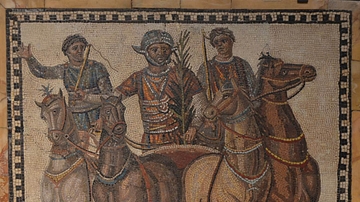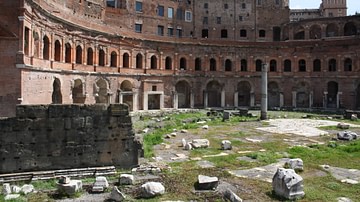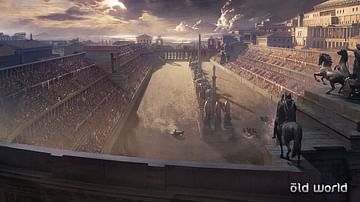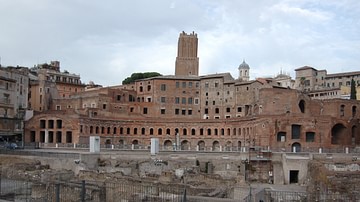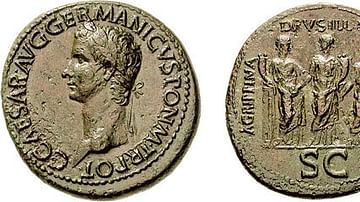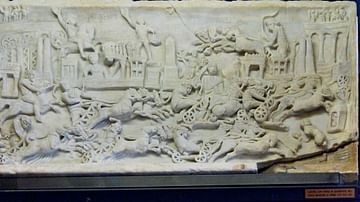Illustration
Sestertius commemorating Trajan's rebuilding of the Circus Maximus, showing the Arch of Titus (not to be confused with the Arch of Titus built over the Via Sacra), which looks down from the upper left, quadrigae (four-horse chariots) surmounting the gates at either end of the grandstand, and metae (turning posts) at either end of the racecourse.
The Circus Maximus underwent various development stages and systematization after several major fires damaged the structure, including the Great Fire of 64 CE under Roman emperor Nero. As a result, subsequent emperors gradually began to rebuild the Circus, and the seats around the track, initially made of wood, were replaced with stone. In 103 CE, Trajan (r. 98-117 CE) restored and expanded the grandstand of the Circus Maximus and gave it its final appearance with an impressive marble façade, elevated stands and an additional 5,000 seats. Pliny the Younger (61-112 CE) celebrates the restoration project in his Panegyric for Trajan:
Elsewhere the vast façade of the circus rivals the beauty of the temples, a fitting place for a nation which has conquered the world, a sight to be seen on its own account as well as for the spectacles there to be displayed: to be seen indeed for its beauty. (51)
Yale University Art Gallery.
Cite This Work
APA Style
Gallery, Y. U. A. (2024, June 05). Sestertius Commemorating Trajan's Rebuilding of the Circus Maximus. World History Encyclopedia. Retrieved from https://www.worldhistory.org/image/19048/sestertius-commemorating-trajans-rebuilding-of-the/
Chicago Style
Gallery, Yale University Art. "Sestertius Commemorating Trajan's Rebuilding of the Circus Maximus." World History Encyclopedia. Last modified June 05, 2024. https://www.worldhistory.org/image/19048/sestertius-commemorating-trajans-rebuilding-of-the/.
MLA Style
Gallery, Yale University Art. "Sestertius Commemorating Trajan's Rebuilding of the Circus Maximus." World History Encyclopedia. World History Encyclopedia, 05 Jun 2024, https://www.worldhistory.org/image/19048/sestertius-commemorating-trajans-rebuilding-of-the/. Web. 19 Apr 2025.

